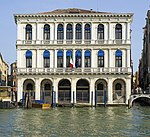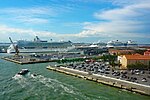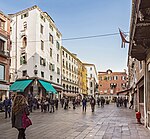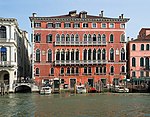San Salvador, Venice
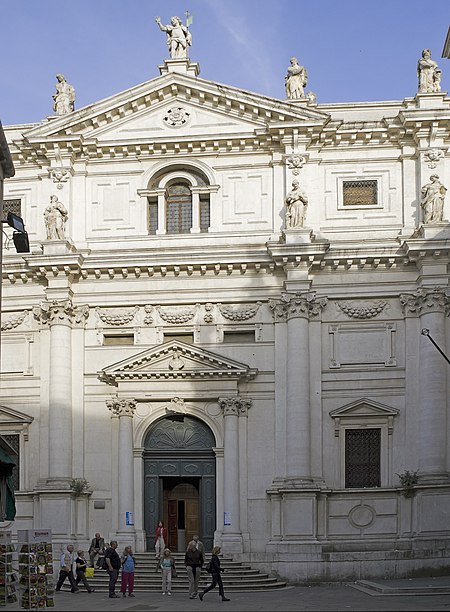
The Chiesa di San Salvatore (of the Holy Savior) is a church in Venice, northern Italy. Known in Venetian as San Salvador, is located on the Campo San Salvador, along the Merceria, the main shopping street of Venice. The church was first consecrated in 1177 by Pope Alexander III shortly after his reconciliation with Emperor Frederick Barbarossa at nearby San Marco. The present church, however, was begun in around 1508 by Giorgio Spavento and continued after his death the following year by Tullio Lombardo, Vincenzo Scamozzi and possibly Jacopo Sansovino. They built a large hall church, formed from three Greek crosses placed end to end. Each has a dome with a lantern to let light into the cavernous interior. The facade was added in 1663 by Giuseppe Sardi. Adjoining the church is the former monastery, now the offices of the telephone company, which still contain Sansovino's magnificent cloisters. San Salvador is the parish church of a parish in the Vicariate of San Marco-Castello. Other churches in the parish are San Bartolomeo and San Zulian. San Salvador is a small, but still-active religious, cultural and social centre.Below the left column on the facade there is a cannonball embedded in the base of the column. It derived from a bombardment in 1849 by Austrian forces in the port of Marghera, of the independent republic which had been proclaimed by Daniele Manin.
Excerpt from the Wikipedia article San Salvador, Venice (License: CC BY-SA 3.0, Authors, Images).San Salvador, Venice
Marzaria del Capitello, Venice Venezia-Murano-Burano
Geographical coordinates (GPS) Address External links Nearby Places Show on map
Geographical coordinates (GPS)
| Latitude | Longitude |
|---|---|
| N 45.4366 ° | E 12.3365 ° |
Address
Chiesa di San Salvador
Marzaria del Capitello
30170 Venice, Venezia-Murano-Burano
Veneto, Italy
Open on Google Maps

